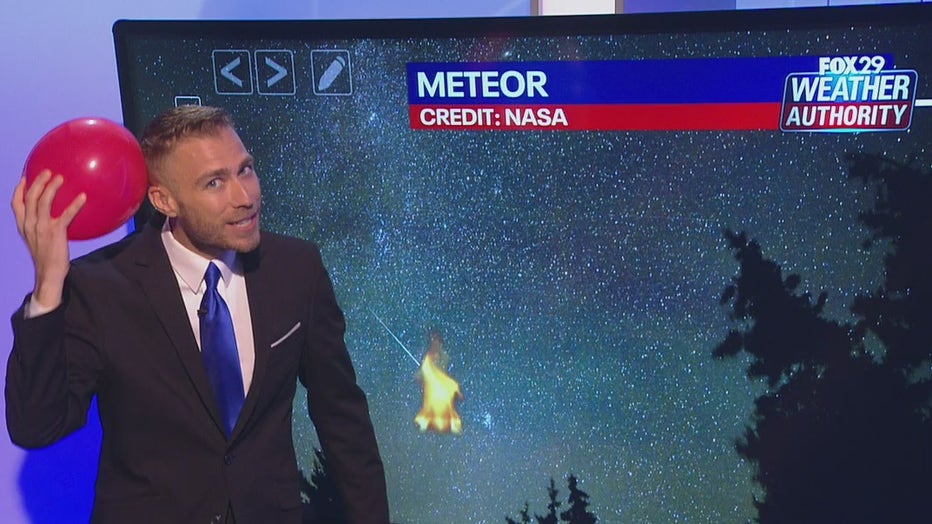Annual August meteor shower continues to peak overnight

Annual August meteor shower continues to peak overnight
Each year, the Earth runs into that rock dust trail as it moves around the sun. The rock dust is in the same spot, which is why the meteor showers happen every year at the same time.
PHILADELPHIA - The annual August meteor shower continues to peak overnight. Most meteor showers are caused by comets. Comets are chunks of rock smaller than an asteroid.
As the comets move through space, they leave a trail of rock dust. If you've ever seen a picture of a comet, the rock dust is what looks like a tail behind the comet.
Each year, the Earth runs into that rock dust trail as it moves around the sun. The rock dust is in the same spot, which is why the meteor showers happen every year at the same time.
The rock dust is pretty tiny. The dust particles are often the size of grains of sand.
As that dust falls through our air, it encounters a lot of air resistance and it ultimately agitates the air.
The dust agitating the air is similar to rubbing a balloon on your head: it creates charges.

Your hair stands up after a balloon rubs it because that agitation receives negative changes to build up at the tip of each piece of hair. The same types of charges move away from each other, which leads to your hair standing up. Now, your hair is attracted to a balloon because the balloon is plastic and is the opposite charge and opposite charges stick together.
As for the air hit by the comet dust, it gains some charges, too. But, air isn't designed for those extra charges, so the air gets rid of them. It gives these charges as a glow of light, or the light you see as a shooting star.
So, nothing's on fire when you see a meteor!
The rock dust doesn't usually make it down to the ground because all the air resistance causes it to break up. Eventually it becomes tiny enough that it's invisible and considered air.
If you want to see the meteor shower Friday night or Saturday morning, the best time to go out is between midnight and 3 a.m., the darkest part of the night.
However, you won't see many meteors this year because of the light from the nearly full moon. All that moonlight will hide many of the shooting stars, though some bright ones will shine through the moonlight.
Meteor showers get their name after the cluster of stars near where they appear. The Perseid are named after the Perseus constellation, in the northern sky. So, look north for the meteor shower.
You can find the north sky with a free night sky app, or if you know where the sun rises or sets, you're good to go. Point your right arm and hand toward where the sun rises. Point your other arm toward the opposite part of the sky, where the sun sets. This leaves you looking right at the north sky.
The next meteor shower will be in October and the one toward the end of the month will have little moonlight. So, you'll see a lot more meteors if you go out for that one, as long as you don't mind the cooler weather.

